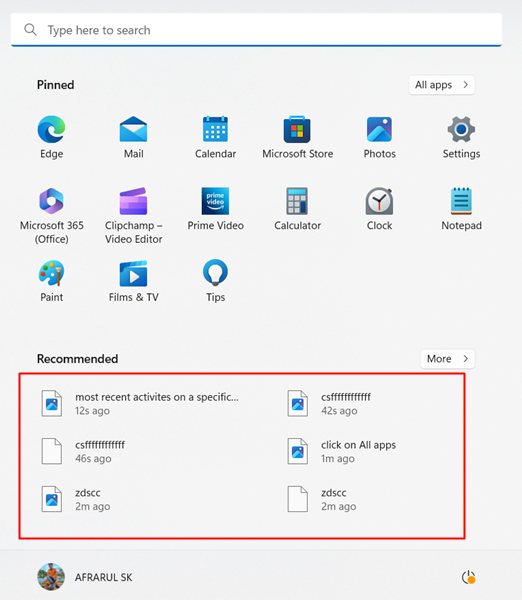The Windows system has many features that make it easy to keep the workflow consistent. One of the useful features is that you can see the most recently opened files. And, similar to other features, it’s important to keep an eye on what we’re doing at a look.
There are several ways to look through all of the files that have been recently used. If you need to learn how to see recently opened files in Windows 11 or 10, follow this super easy guide until the end to learn everything you need to know.
How to View Recently Opened Files in Windows 11/10
In Windows, seeing the most recently used or open files is easy and quick. You can get help in this situation in a few different ways. So let’s not waste time and get right into the steps.
1. Use Start Menu
The start menu in Windows 11 is better than enough to get anything going. You can make a hand-picked list of apps your favorite app. Just below the list of apps, you can see all the files you’ve recently opened, changed, or read.
In the section called “Recommended,” you will find the six most recent files. But if you want more information about recently opened files, click the “more” button. It will show you up to 20 files that you have recently worked on. You can either open the file from the list or remove it.
But many people have found that the recommended area still needs to show recently added files. It’s possible that you turned off its settings. What you need to do to fix this is to do the following.
- Select Personalization from the Start menu.
- After that, click on Start.
- click on start personalization Enable the button to Show recently opened things in Start, jump lists, and File Explorer next.
Alternative Way
- Push the Windows start button and then click on All Apps. Click on All Apps.
- Now, right-click on any app you want to use.
- It will show you the most recent things done on that app.
2. Quick Access in File Explorer
File Explorer has a feature called “quick access” that will help you get all of your recent files under your control. Most importantly, it is one of the easiest and simplest things to do.
- Select File Explorer from the Start menu, then click Open.
- Click the “Quick Access” button. It will show you all the files and folders you’ve opened recently.
Recent files are disabled if you can’t see them. To enable it once more, you must follow these steps.
- Select File Explorer from the Start menu, then click Open.
- Now, connect on the three dots and choose from the choices.
- Show recently used files should be checked under the General tab.
3. Check the Recently Files/Activities of an App Using the Start Menu Search bar
With this, you can see everything that any app or software has done recently. You can go right to the work from the list of recent tasks. But it will only show some apps, which is its only bad thing.
- Click or press Windows + I to use the search bar.
- In the search box, type the name of the app. We have, for example, looked for Google Chrome. Let’s check it out. It shows pages you’ve been to recently and pages you visit often. So, you can also look for other apps to see what’s been going on in the app recently. You can look at files on some other apps.
4. Advanced Way to Check Recently Opened Files
This is a pretty advanced method, but it’s worth trying to see all of the recently opened files. Here, it can show a list of tasks instead of just twenty.
- To open the Run tool, press
- Now type this code and hit the enter button.
%AppData%\Microsoft\Windows\Recent\
Follow this procedure if you want to clear all recently opened file lists.
- Open File Explorer, click the three dots and then click Options.
- Click the Clear of File Explorer records button on the General tab. And then click the button that says “OK.”
Final Words
So, these are the best ways to view recently opened files in Windows 10/11. No matter what method you use, it will help you differently. But if you need help moving forward, let us know in the comments.